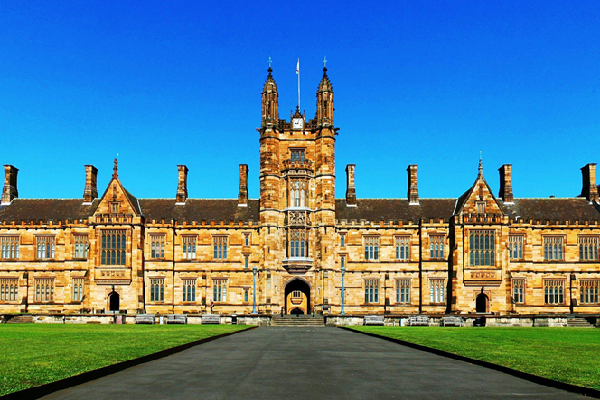University of Sydney: Exhibition pays tribute to landmark Australian Seashores book
A new exhibition at the University’s Chau Chak Wing Museum celebrates a landmark book on Australian Seashores – its imagery, its impact on science, its popularity with the public and academics alike and the crucial role of pioneering women scientists in its publication and longevity.
Australian Seashores was the passion project of William J Dakin, a long-serving and internationally recognised professor of biology at the University, among whose many notable achievements was making science come alive for non-academics, including with his ABC radio series Science in the News and Science Talk, broadcast during the 1930s and ‘40s.
The book, first published in 1952, declared its broad audience from the outset as “A guide for the beach-lover, the naturalist, the shore fisherman and the student”. Equally ambitious was the array of topics covered, from how different coastlines are formed and change and why the sea is a particular colour, to guides for identifying the main plant and animal species found on Australian seashores.
“The book was a major success from the start, reprinted twice within the first four years and then revised over a 40-year period,” said Tony Gill, curator of natural history at the Chau Chak Wing Museum.
“It invited Australians to identify as coastal dwellers. It was hugely influential; inspiring and training generations of marine scientists and educating the Australian public. It continues to be used as an identification guide to this day.”
Australian Seashores focuses on the New South Wales coastline extending across the Peronian Region, an area that extends from Moreton Bay, Queensland to Wilson’s Promontory, Victoria, and concentrates on plants and animals that occupy the narrow part of the shore that is covered and uncovered by the changing tides, the ‘intertidal zone’. This is an area of high biodiversity, which at the time of publication was poorly understood, even though it was easily accessible.
Many plant and animal species occupy distinct bands within the intertidal zone, which the Seashore team described as ‘zonation’ patterns. Until the book’s publication using original Australian photographs, students and researchers depended on textbooks that used overseas examples of zonation.
“Many of the exhibition’s images are scans from glass negatives in the collection to produce large, high resolution, stunning images of animals and landscapes including Long Reef, Newport, Narooma, Jervis Bay, Fingal Beach, Eden and Ballina. This is the first time they have ever been seen on any museum’s walls, after being held by the University since 1984, thanks to a generous donation by the Dakin family. They are accompanied by specimens from the Macleay collections.”
It invited Australians to identify as coastal dwellers. It was hugely influential; inspiring and training generations of marine scientists and educating the Australian public.
Tony Gill, curator of Natural History, Chau Chak Wing Museum
Nyctiphanes australis Sars, 1883, krill. Macleay Collections, Chau Chak Wing Museum, The University of Sydney, HP84.7.9.10
The book was founded on fieldwork and published research by its three biologist authors – the University’s Professor Dakin and Dr Isobel Bennett and Elizabeth Pope from the Australian Museum, an alumna of the University. Much of the fieldwork was arduous and done in difficult conditions and Dakin’s increasingly poor health meant the women, (assisted by Dakin’s wife Gladys and by a friend of Pope’s, Helen Turner) took up much of the fieldwork. When Dakin died in 1950, the full responsibility of finalising it for publication fell to Pope and Bennett. This was at a time when there was little participation, encouragement, or recognition of women in science.
“Dr Bennett had no formal education in science and was originally hired by Professor Dakin, after a chance meeting on a cruise, as a secretary to assist in a book on whaling. Encouraged by him, she went on to make major contributions to marine science, eventually publishing eight more books of her own, after Australian Seashores,“ said curator Tony Gill. “Our current marine scientists Professor Maria Byrne and Professor Emma Johnston have paid tribute to Dr Bennett’s trailblazing example.”
“She kept the book alive through 11 reprints and editions, updating the identifications and names of each species in each edition to keep pace with a growing scientific understanding of the fauna. In 1986, asked to bring the book up to date, Dr Bennett not only revised the text but also replaced its hundreds of black-and-white images with colour photos.”
Fittingly, given his ambition to engage the public, Professor Dakin directly benefitted from contributions by citizen scientists, such as intertidal specimens sent by a Clarence River resident and information from an ABC radio listener that led to new research on prawn biology in Tuggerah Lakes. Australian Seashores served to further empower and equip the public to contribute in this way by providing the basic means for identifying organisms and for understanding their biology.
“In keeping with this and the continued emergence of citizen science, massively boosted by social media, we are inviting museum visitors to realise the potential for the wonderfully detailed Australian Seashores photos to document environmental change. They can upload their contemporary photos, using a QR code, to be compared with the 70-year-old images,” said Gill.
“It’s a fitting tribute to the book’s rich history and continuing relevance that we continue to bring its scientific contribution to life in new and meaningful ways.”

